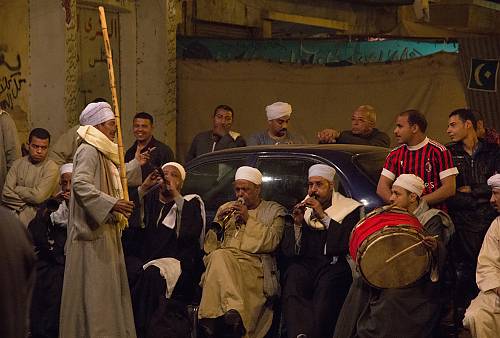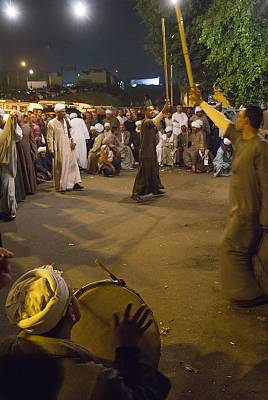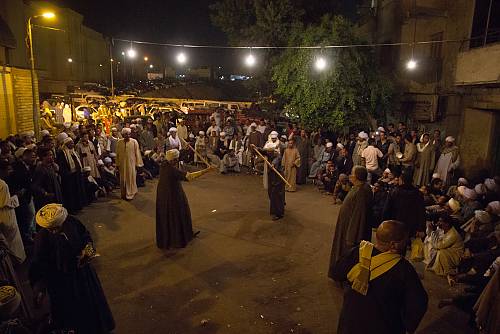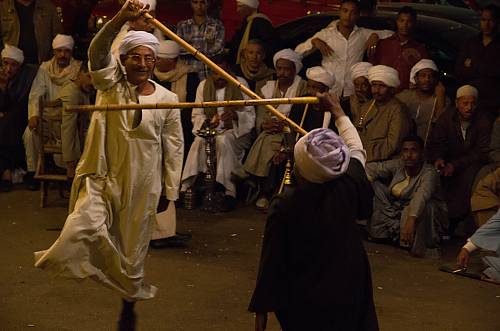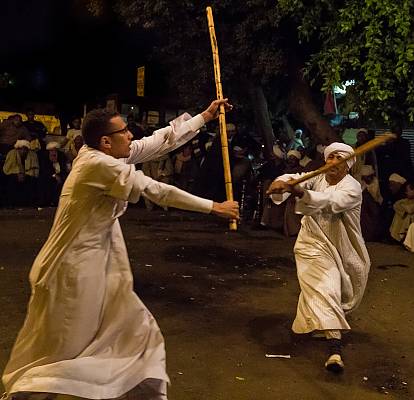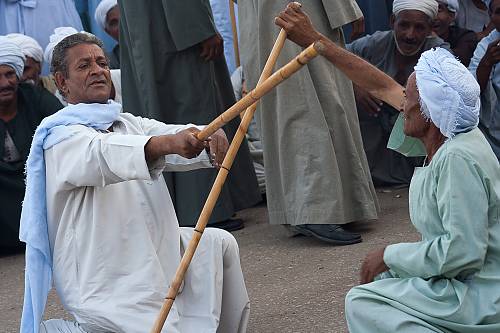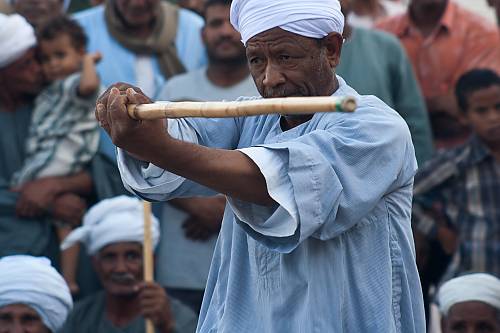Tahteeb, stick game
Inscribed in 2016 (11.COM) on the Representative List of the Intangible Cultural Heritage of Humanity

In ancient Egypt, tahteeb was used as a form of martial arts. Its role has since changed to that of a festive game but some of the symbolism and values associated with the practice remain. Performed in front of an audience, it involves a brief, non-violent interchange between two adversaries, each wielding a long stick while folk music plays in the background. Complete control must be exercised as no striking is allowed. Practitioners are male both young and old, mostly from Saeedy populations in upper Egypt, particularly rural areas where the tahteeb stick has been used by inhabitants as part of their daily lives and considered a sign of manhood. The rules of the game are based on values such as mutual respect, friendship, courage, strength, chivalry and pride. Tahteeb is practised in public and private social settings. Sometimes competitions are held to encourage new players and special tahteeb evenings involving different governorates that can last almost a week. Transmission occurs within families, neighbourhoods and to anyone who wishes to learn. The game gives participants confidence from skills acquired and a sense of pride performing before their community. It also helps to strengthen family ties and foster good communal relations.
